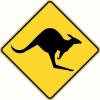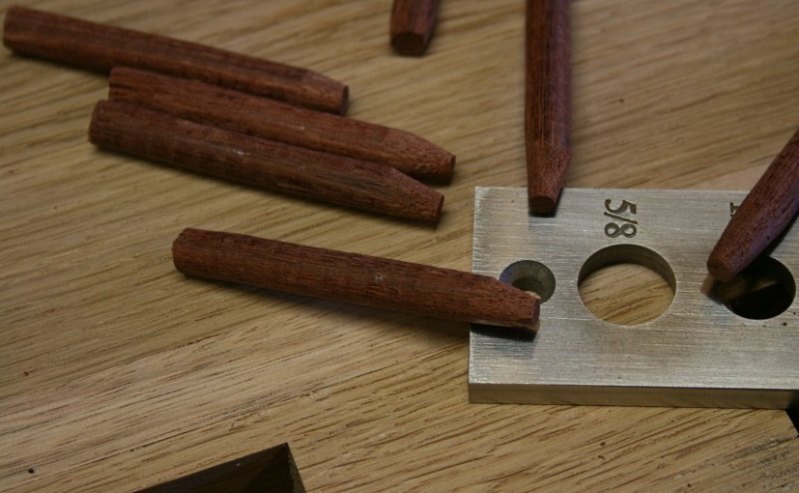I was looking at this leftover steel rod I have from making a pin for my leg vise, and wondering what to do with it, and thought of an idea for drawbore pins. Curious if this would make sense:
The "twist to apply pressure" idea of the "oblique cone" shaped pins from TFWW appeals to me, although the price (which I admit is fair for the item, just not my wallet right now, when I can make normal concentrically tapered pins work well enough) does not. Looking at a drift pin, and wondering if I could accurately file or sand something akin to that shape into it, I just wasn't quite sure, but I don't think so.
But I'm looking at this steel rod - it's the wrong size (I'm more apt to use 1/4" drawbore pegs than 3/8") but I began thinking - I tend to drill my drawbores with the same bit, and the offsets never vary that much. If I use the same size holes, I don't really need a tapering pin if I work that eccentricity into it, do I?
I'm thinking of taking some rod, chucking it in the drill and running it against a grinder or sander until it slides in and out what feels right. Then chuck it in a metal vise and filing a slight flat on opposite sides, and blend that in until the entire pin is a reasonably uniform oval/ellipse shape.
The idea is that the rod should slight right through the drilled hole. When the two parts are mated, the rod will slide through the hole one way (with the shorter diameter of the oval facing the tenon shoulder and the slightly protruding crescent that shows through the hole in the mortise ) if I've filed it enough. Twisting the rod will begin to show a wider diameter against that offset.
Granted, without the taper you'd have a hard time keeping the pin from sliding all the way up to the handle, and these pins would only be good for exactly one size hole, and probably only within a limited range of offsets; but I feel like it might work, and given how cheaply you can get a long length of steel rod, they probably even work out to be cheaper than drift pins - I'm not sure you really need hardened steel for this application.
The added benefit is that they could probably even work in drawbores where the hole doesn't go all the way through the frame.
Below is a cross section image of what I'm thinking - nothing exact. The dark brown color being the piece with the mortise and the hole through it. You can see the light brown of the slightly misaligned tenon and it's hole peeking through. The red is the cross section of the slightly ovalish proposed pin. As you see, it fits in one direction - the second picture, I've taken that same pin and in my graphics program, rotated it slightly, and you can see it begin to push against the walls.
pin1.jpg
pin2.jpg
So what do you think? Dumb idea? Is there another benefit of the tapered aspect of the pin that I'm missing, besides the ability to work with a bit of a range of hole sizes and offsets? I'm sure there is . . .
I guess at some point I'll just have to try it out.





 Reply With Quote
Reply With Quote





